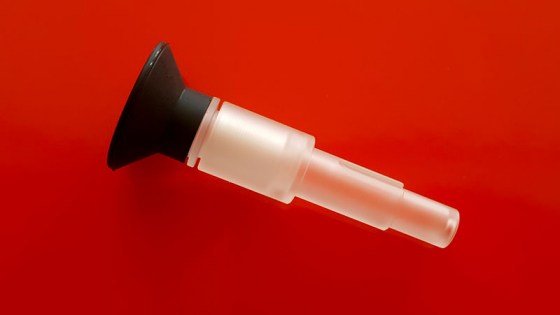

Osmium tetroxide - used in optical microscopy to stain lipids black.The red accumulates in intracellular lipid globules, staining them red. Nile red/Nile blue oxazone - this stain is made by boiling Nile blue with sulfuric acid, which creates a mix of Nile red and Nile blue.Nile blue - stains nuclei blue and may be used on living cells.Neutral/Toluylene red - stains nuclei red and may be used on living cells.Methylene blue - stains animal cells to make nuclei more visible.This stain can also be used to stain spores. Malachite green - a blue-green counterstain to safranin in Gimenez staining for bacteria.When in solution, starch and iodine turn a dark blue color. Hoechst stains - two types of fluorescent stains, 3322, these are used to stain DNA in living cells.

Hematoxylin - a nuclear stain that, with a mordant, stains nuclei blue-violet or brown.Fuchsin - this stain is used to stain collagen, smooth muscle, or mitochondria.Ethidium bromide - this stain colors unhealthy cells in the final stages of apoptosis, or deliberate cell death, fluorescent red-orange.Eosin - a counterstain to haematoxylin, this stain colors red blood cells, cytoplasmic material, cell membranes, and extracellular structures pink or red.DAPI can be used in living or fixed cells DAPI - a fluorescent nuclear stain that is excited by ultraviolet light, showing blue fluorescence when bound to DNA.Crystal violet - stains cell walls purple when combined with a mordant.Coomassie blue - stains proteins a brilliant blue, and is often used in gel electrophoresis.Carmine - colors glycogen, or animal starch, red.

Bismarck Brown - colors acid mucins, a type of protein, yellow and may be used to stain live cells.All these stains may be used on fixed, or non-living, cells and those that can be used on living cells are noted. Commonly used stains and how they work are listed below. There are several types of staining media, each can be used for a different purpose. The mordanted stain will remain on/in the sample when excess dye solution is washed away. Some dyes require the use of a mordant, which is a chemical compound that reacts with the stain to form an insoluble, colored precipitate. This process may involve immersing the sample (before or after fixation or mounting) in a dye solution and then rinsing and observing the sample under a microscope. Staining - application of stain to a sample to color cells, tissues, components, or metabolic processes.Thin sections (slices) of material such as tissue may also be applied to a microscope slide for observation. Cells may either be grown directly to the slide or loose cells can be applied to a slide using a sterile technique. Mounting - involves attaching samples to a glass microscope slide for observation and analysis.Common fixatives include formaldehyde, ethanol, methanol, and/or picric acid. This process may involve several steps, but most fixation procedures involve adding a chemical fixative that creates chemical bonds between proteins to increase their rigidity. Fixation - serves to "fix" or preserve cell or tissue morphology through the preparation process.Permeabilization - treatment of cells, generally with a mild surfactant, which dissolves cell membranes in order to allow larger dye molecules to enter inside the cell.One or more of the following procedures may be required to prepare a sample: How Are Cells Stained and Slides Prepared?Ĭell staining techniques and preparation depend on the type of stain and analysis used.

Cells may also be enumerated by staining cells to determine biomass in an environment of interest. Cells may also be stained to highlight metabolic processes or to differentiate between live and dead cells in a sample. The most basic reason that cells are stained is to enhance visualization of the cell or certain cellular components under a microscope. Most stains can be used on fixed, or non-living cells, while only some can be used on living cells some stains can be used on either living or non-living cells. By using different stains, one can preferentially stain certain cell components, such as a nucleus or a cell wall, or the entire cell. Photo courtesy of the Public Health Image Library.Ĭell staining is a technique that can be used to better visualize cells and cell components under a microscope. This Giemsa stained micrograph depicts an example of a slightly acidic slide that yielded a pink colored resultant stain.


 0 kommentar(er)
0 kommentar(er)
